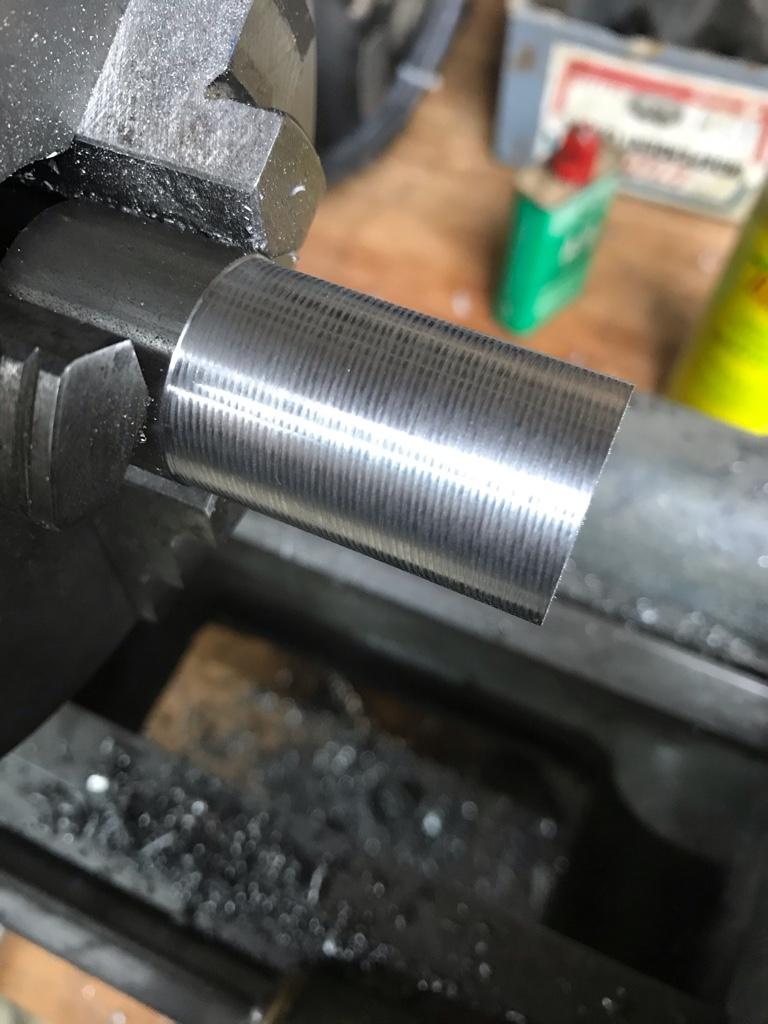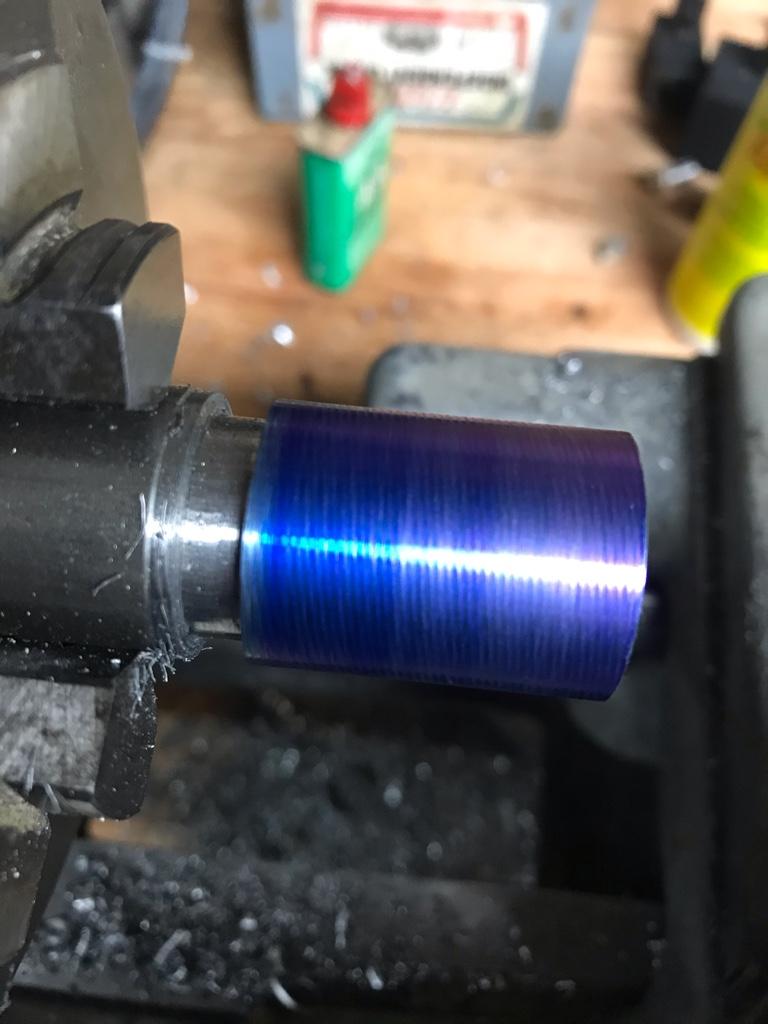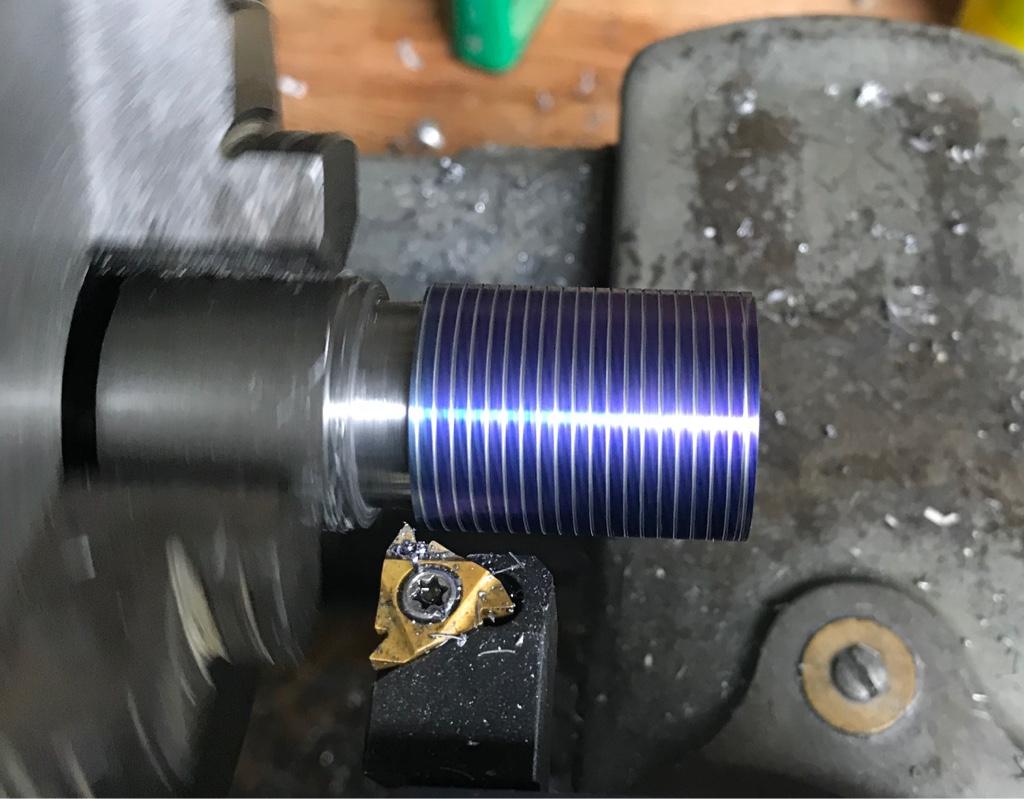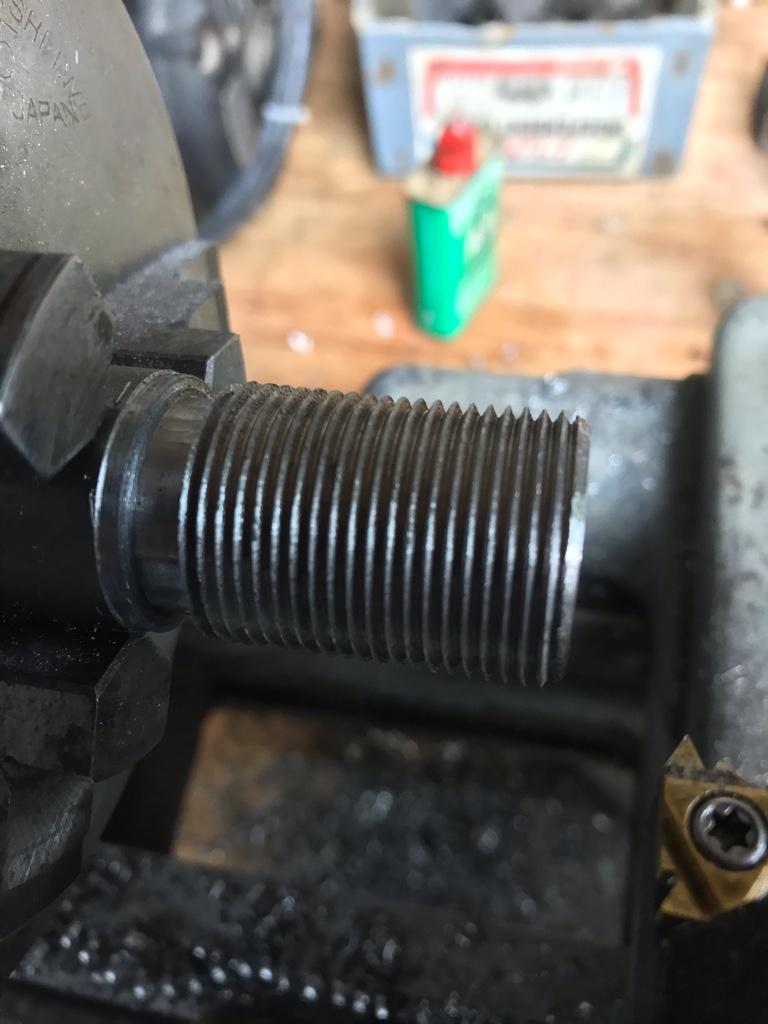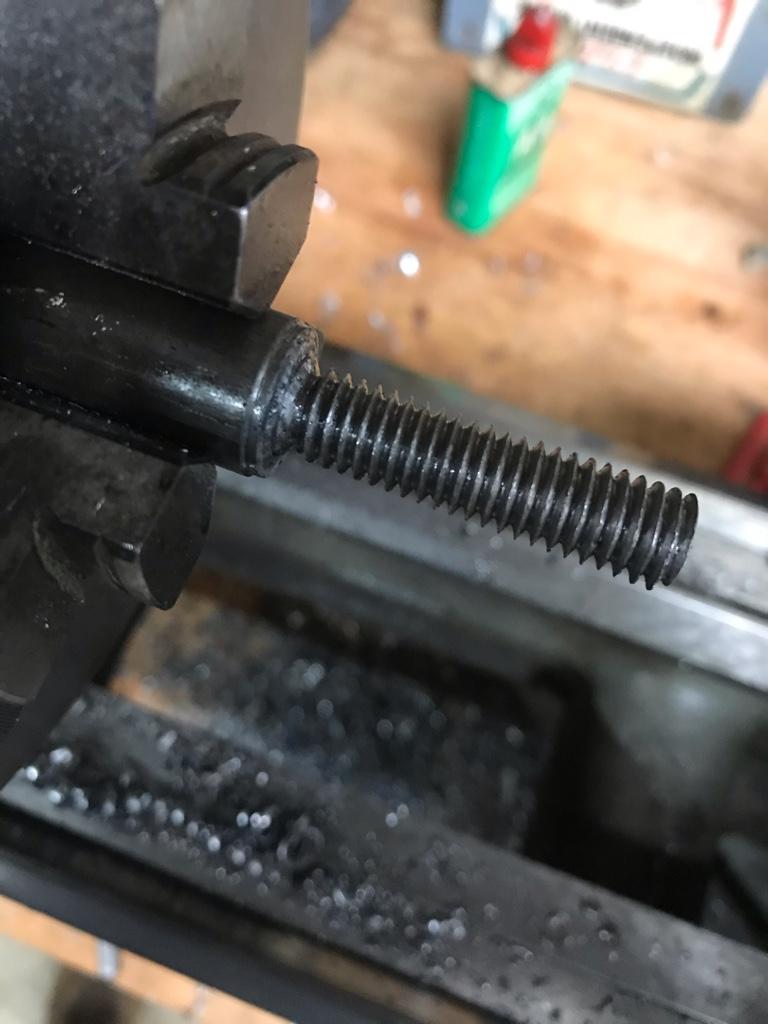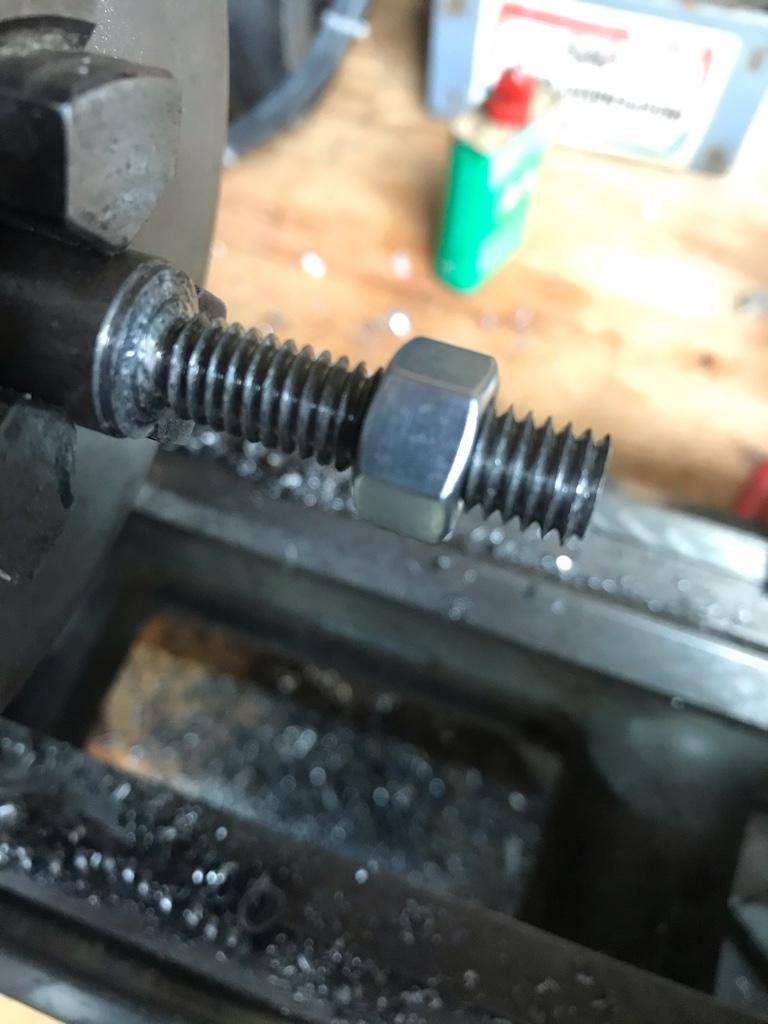- Joined
- Oct 16, 2019
- Messages
- 6,576
Thanks, I'm going to keep at it because this is a skill I want to develop. So definitely open to all information and perspectives.@DavidR8, Awesome job! You are making some real progress forward.
The 29.5 degree angle thing gets a lot of rookies on their first time (myself included). I prefer to skip the compound angle and thread with the cross slide only. It saves time and I haven't seen any difference in the quality of cut between the two. Plus it makes it much easier to advance on the diameter directly (skipping the trig for the compound slide). Try it out at some point and make a decision which you like better.
I do almost all my threading with carbide (and turning too!). There is not really a minimum speed limit for carbide, the big difference is the maximum speed you can cut. If you find carbide is not working well for a particular application, you may want to look for a sharper insert with a ground edge. These are often advertised as being for aluminum but they work very well on soft steels and stainless as well. I see it is easy to find the 16ER insert with this edge geometry, although I haven't tried them personally yet.
Soft metals like aluminum, 1018, etc don't like to make pretty threads in my experience. Try picking up some 41L40 and threading on that. You'll be amazed at how professional your work will look.
I usually use the threading tool to create a relief behind the thread I am about to cut (about a thou or two below the full depth of cut). This gives you room to disengage the half nuts.
Thread mics are great and very fast, however you should pick up a cheap set of thread wires and get used to using them. You can use them for any diameter thread and any pitch. They will get you out of a tough spot where you can't use the mic.
Thread tables are my most used chapter of Machinery's Handbook. I use these to copy the major diameter and pitch diameter tolerance range to my notebook before heading to the lathe. I also use this website frequently to calculate the tolerances of threads that aren't in Machinery's Handbook: http://theoreticalmachinist.com/Threads_UnifiedImperial.aspx
Keep up the great work!
It's completely mesmerizing to watch the tool make its way along the work, a chip curling off and at the end of it you have a useful part.
Amazing!


